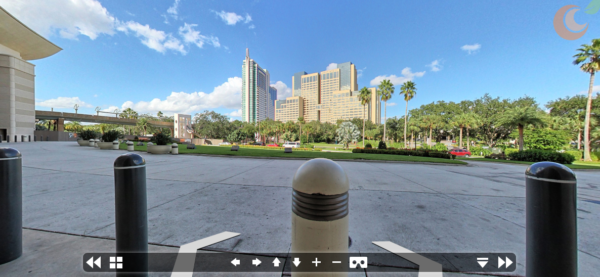This Post Initially Appeared on IAVM
Virtual reality is certainly one of the new kids on the technology block, and an extremely intriguing one at that. The utility and potential of VR is a relatively unexplored frontier, featured mostly by the gaming and entertainment industries. But, as VR becomes more developed and as more people have the necessary hardware to explore VR, other industries have started to experiment with it.
Convention centers are among them. Convention centers are exploring virtual reality as a way to enhance marketing and sales, and to improve the experience of guests, attendees, exhibitors and even staff. I’m sure we’ll see this at IAVM’s upcoming VenueConnect Annual Conference and Tradeshow in Nashville, August 7-10. (If you’re not already planning to go, it’s a fantastic opportunity to learn, network, and hear from some real pros).
One example of VR being used by convention centers is a project that we’re proud to have been a part of: Florida’s massive 7-million square foot Orange County Convention Center (OCCC) – the second largest convention center in the U.S. – will soon be launching concept3D’s VR-enabled interactive mapping and virtual tour platform, atlas3D, complete with a new space design tool called MapSpacer. This new tool – developed in close collaboration with OCCC – uses a SketchUp application to allow event planners and pros from OCCC to collaborate on a custom room layout, saving hours of time and back and forth, and presenting 2D and 3D layouts that draw from the convention center’s inventory of chairs, tables, stages, buffets and other needs.
As convention center pros, we’ve all seen how VR draws people into an exhibit. But how can we use VR to make our jobs easier (and potentially more fun)? Here are a few ways VR is going to change things for convention centers:
Virtual Reality and Your Bottom Line: Marketing and Sales
When it comes to convention centers, the ability to market or sell space boils down to how well visitors can grasp the potential of that space. What if they can’t visit in person? How do you convey the magnitude of the space available, from exhibit halls to breakout areas, concessions, and more? Virtual reality can serve as the ideal solution to put an event organizer right in your space, even if they are on the other side of the world. The position of saving that organizer the time and money involved in traveling to see the space in person goes a long way, and can easily change the conversation from a potential lead to the planning phase. Aside from the added utility VR provides, the technology is an intrinsically interesting experience.
Facilitating Events
So you get the thumbs up to host the next big convention. Virtual reality can now be used as a major asset in developing the strategy and plan for that event. In terms of dividing up floor space for exhibitors and dividing overall layout, using virtual reality adds a new perspective to the experience that was unharnessed by using blueprints or two dimensional floor plans. With VR, you can take a deeper look into what the event will look like while the stakes are much lower.
Concept3D’s MapSpacer tool creates 2D and 3D models of a custom event space. The 3D versions can easily be viewed through VR-capable fly-throughs. Additionally, convention centers could capture events, so organizers could experience – as if they’re right there in person, walking the floor – what a similar event would be like.
Facilities, Operations and Logistics
The capabilities of VR are in no way limited to the convention center floor. There’s so much that goes on behind the scenes. Loading bays, parking areas and security don’t receive the lion’s share of attention during events, but they all play critical roles in keeping things running smoothly and safely. With VR, pros involved on the logistical side of events could see exactly where a truck needs to be backed up for unloading; where deliveries need to be made; explore security, and more. Hard-to-reach areas could even be captured by a VR camera for plumbing, HVAC, and other needs.
Profiling Current / Future Construction
Convention centers are constantly improving – adding new amenities, space, etc. With VR, you can let someone fly through buildings and new facilities that are currently under construction as well as those that won’t be under construction for another ten years. That’s exciting, especially for major events that plan years if not decades ahead. Show them your best! This example may have particular interest for convention center pros to show municipalities the potential of the new space, and all that the addition will offer from a regional economic development standpoint.
We’re just scratching the surface of what VR will be able to bring to event planners and convention center professionals in any role. It’s an exciting time in event tech, and we’re going to see rapid advancements through VR and many other technologies in the coming years!
I hope to see you at VenueConnect!

